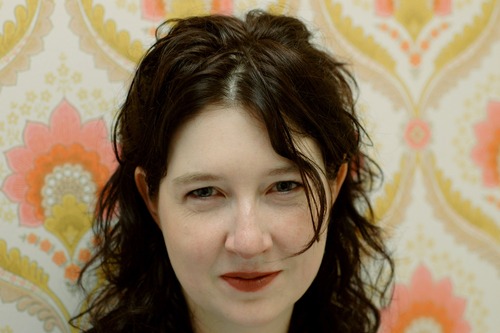
An Interview with Matthea Harvey About Her Syllabus
This is part of a series of conversations with writers who teach, where we discuss how they develop an idea for a course, generate a syllabus, and conduct a class. Read the full syllabus here.
Matthea Harvey is the author of five books of poetry, including Of Lamb, Modern Life, and Pity the Bathtub Its Forced Embrace of the Human Form, and two children’s books. Her newest book, If The Tabloids Are True What Are You?, features a wide variety of art forms, both poetic (sonnet, erasure, prose poems) and visual (photographs of miniatures submerged in ice cubes, embroidery depicting instruments, illustrations of mermaids with tools for tails). Harvey teaches at Sarah Lawrence College.
—Stephanie Palumbo
I. BASEMENTS COULD BE POEMS
STEPHANIE PALUMBO: How do you, personally, define poetry?
MH: That’s a hard question. I think poetry involves heightened noticing or imagining as well as creating a certain made shape. On the other hand, that shape can be made just by pointing at something and saying, “That’s a poem.” My husband Rob started a literary magazine with some friends called jubilat. They would publish an interview with a perfumer, a list of wrestling terms, and lots of poems, with no distinction. It was a way of saying, All of these things are poetry, which is the case for me too.
SP: Is anything explicitly not a poem?
MH: I’m thinking of all my least favorite things. I don’t like basements, but definitely basements could be poems. Not fond of skin diseases, but again, there’s a pattern. Probably anything could be a poem.
SP: How is studying poetic forms useful for students?
MH: I try to get them to think about form as something they can invent themselves. I’m giving them the tools to go to the blank page and start to write. Often I’ll be writing and notice that there’s a form emerging, and that gives me a little bit of a dance partner. Ideally, a form should give you energy, an engine to keep you going. When a form is shutting you down, and you’re just trying to make rat rhyme with hat, that’s depressing and not fun.
SP: You use visual forms in the class as well.
MH: I give the students lots of images—a photo of Jean Shin’s deconstructed shirts or Yuken Teruya’s tiny tree cut out of a Tiffany bag (called “Notice Forest”). Both artworks are working with a given form. Or I’ll give them an essay on how...
You have reached your article limit
Sign up for a digital subscription and continue reading all new issues, plus our entire archives, for just $1.50/month.
Already a subscriber? Sign in




